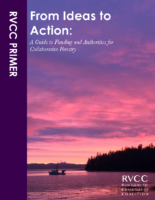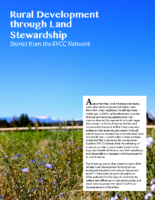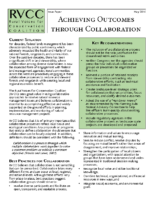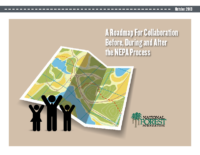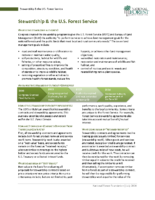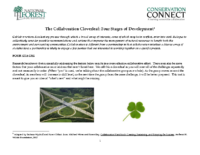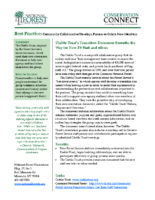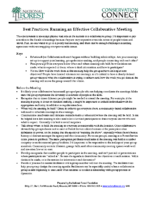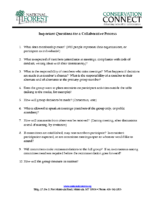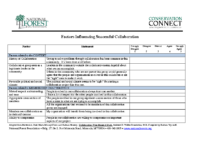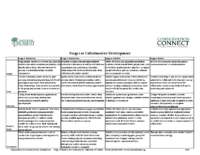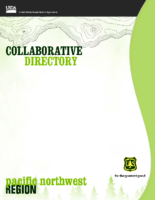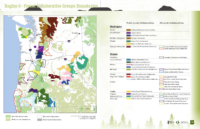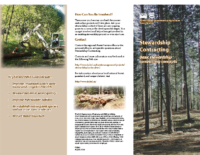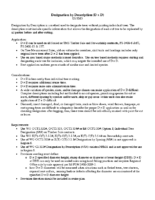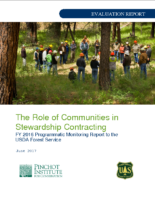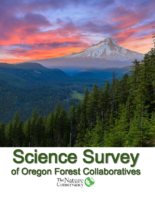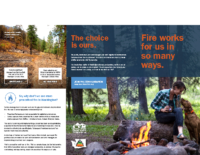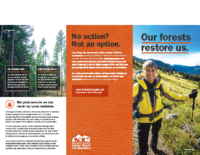Resources for Forest Collaboratives can be numerous, but are often disperse. The Washington Forest Collaborative Network has pooled its resources, and resources from partner organizations, here to make them easy to find and access. Click on the plus (+) to expand each organizations resource bank and minus (-) to close a group’s resources.
Forest Collaboratives and Forest Service: Acronyms and Terminology
The purpose of the Washington Forest Collaborative Network (WFCN) Forest Service Acronyms and Terminology document is to provide collaboratives with an educational resource that members can utilize and draw from when developing their own documents. This is meant to serve as a living document to which acronyms and terms can be added and updated over time. Wherever possible, terms are linked to pre-existing definitions or information provided by the Forest Service or other relevant federal agency.
The Rural Voices for Conservation Coalition (RVCC) promotes balanced conservation-based approaches to the ecological and economic problems facing the rural West and the nation.
From Ideas to Action: A Guide to Funding and Authorities for Collaborative Forestry
Working across public and private boundaries is essential for addressing the ecological and economic challenges we face in the rural West. This new guidebook is intended to help community based organizations, collaborative groups, agency staff and others improve their understanding and use of existing tools that can facilitate all lands stewardship. It summarizes key NRCS and Forest Service programs (as well as their deadlines and requirements), offers tips and tricks for success, provides Ask an Expert sections, and more.
Achieving Outcome Through Collaboration
An RVCC Position Paper on best practices and outcomes of collaboration from RVCC members.
USDA Rural Development funds offer up a unique opportunity to catalyze a much needed rural stewardship economy throughout the west. Learn more through case studies featuring RVCC network projects including the Western Juniper Alliance and restoration in Central Idaho.
The National Forest Foundation provides a wealth of resources for Forest Collaboratives.
This document is designed to provide a roadmap for the involvement of collaborative groups before, during and after the National Environmental Policy Act (NEPA) process. These pages do not contain a specific set of directions to get from wherever you are to an ideal collaborative relationship. Rather, this tool is designed to help you and your partners create your own roadmap with your own destination.
What is Stewardship Authority?
An overview of stewardship and the Forest Service.
Factors Influencing Successful Collaboration
This evaluation form is useful for collaborative groups desiring to self-assess collaborative success.
The Collaboration Cloverleaf: Four Stages of Development
Research has shown that successfully addressing the factors below results in a more effective collaborative effort. There may also be some factors that your collaborative must address that aren’t listed here. We call this a cloverleaf as you will meet all of the challenges repeatedly and not necessarily in order. As the group moves around the cloverleaf, its members will increase in skill level, so the next time the group faces the same challenge, it will be better prepared. This tool is meant to give you an idea of “what’s next” and what might be missing.
Stages of Collaborative Development
This grid outlines the four stages of collaborative development – formation, foundation, fruition, and future. This tool will be helpful to any budding – or mature – collaborative group.
Running an Effective Collaborative Meeting
The effectiveness of meetings plays a vital role in the success of a collaborative group. It’s important to pay attention to the details of meetings because they are very expensive events in terms of people’s time and travel. Plus, no one wants to go to a poorly run meeting, and there can be enough challenges in finding agreement without struggling over preventable issues.
Important Questions for a Collaborative Process
This tool is ideal to guide the start-up or launch phase of a collaborative group or effort.
Orienting New Members into a Collaborative
This best practice outlines the Diablo Trust’s proactive work to ease transitions and turnover by developing an orientation document, called the “Diablo Trust: History, Purpose and Overview.”
The Forest Service produces many products that can be beneficial to Forest Collaboratives and have a dedicated page with Forest Collaborative Resources.
Collaborative Directory: Pacific Northwest Region
The Forest Service Directory includes information on 36 Collaborative Groups across the Pacific Northwest.
Stewardship Contracting: Basic stewardship contracting concepts
A Forest Service flyer on the basic concepts of stewardship contracting and how it functions.
Designation by Description (DxD) is method used under the Forest Service Stewardship Authority to designate trees without marking individual trees for vegetation management.
The Pinchot Institute for Conservation advances conservation and sustainable natural resource management by developing innovative, practical, and broadly-supported solutions to conservation challenges and opportunities. We accomplish this through nonpartisan research, education and technical assistance on key issues influencing the future of conservation and sustainable natural resource management.
To better understand how the public engages with the Forest Service in these projects, this report studies 15 recent stewardship contracting projects to examine interactions between the public and the Forest Service throughout the lifespan of these projects. This report highlights successes and challenges to greater public engagement in stewardship contracts and agreements.
Science Survey of Oregon Forest Collaboratives
In September 2016, The Nature Conservancy (TNC) launched a project to better understandthe biophysical science support needs of the diverse forest collaboratives around Oregon. TNC reached out to 27 forest restoration collaboratives across Oregon to assess their Science Needs and Requests, interviewed 44 individuals and received input from 21 of 27 forest collaboratives.
The North Central Washington Forest Health Collaborative (NCWFHC) is a member organization of the Washington Forest Health Collaborative.
An overview of the value and benefits of prescribed fire written for partners and members of the public.
An overview of the value and benefits of mechanical thinning written for partners and members of the public.
The Forester’s Fund offers grants from $1000-$5000 for activities that:
- Promote education to enhance public understanding of the role of professional foresters in forest resource management,
- Conduct forest policy activities, and
- Strengthen state societies, divisions, and chapters in achieving the mission of the Society.
For more information, click here.
In 2016 the Central Oregon Forest Stewardship Foundation hosted the Forest Restoration Implementation Efficiencies Workshop. Out of that workshop came a number of resources that can guide forest collaboratives as they move from planning to implementation.
Forest Restoration Implementation Efficiencies Workshop
Authors: Daniel Leavell, Amy Markus, Craig Bienz, Kellie Carlsen, Emily Jane Davis, Michael Douglas, David Ferguson, Lee Fledderjohann, Kasey Johnson, Ned Livingston, Jason Pettigrew, Gene Rogers, Marci Schreder, Dan Shoun, Leigh Ann Vradenburg
Report by Oregon State University Extension
This guide describes the process the Klamath-Lake Forest Partnership (KLFHP) has used to plan and implement cross-boundary restoration projects to achieve improved forest health conditions on large landscapes scales. It is intended as a model other individuals and communities can modify to meet the needs of their local circumstances.
